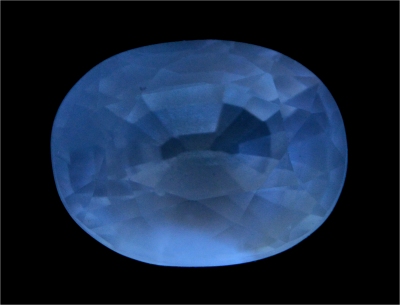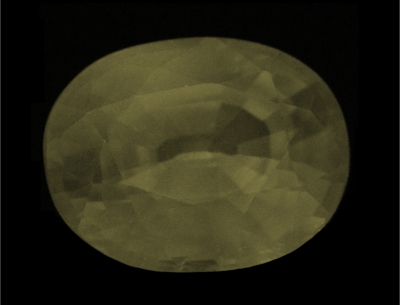An unusual zircon showing hazy white (icy) color
- Details
- Created: Friday, 15 February 2019 21:11
Zircon comes in all colors, violet, purple, blue, green, yellow, orange, red, pink and brown as well as colorless. Seen for the first time, the described zircon exibits an unusual hazy white color as shown in figure 1. Color looks like a light milky white but the stone is not at all blurry as some metamict zircons can look like. In fact, after observing it through the 10x lens and the microscope, it is a colorless zircon colored by numberous tiny white inclusions as seen in figure 2. In analogy to icy diamonds which are also 'colored' by inclusions, a possible better way to characterize this zircon would be to describe it as an icy zircon.
It is reportedly from Ratanakiri in Cambodia as most of the blue zircons in the market [1][5][6].
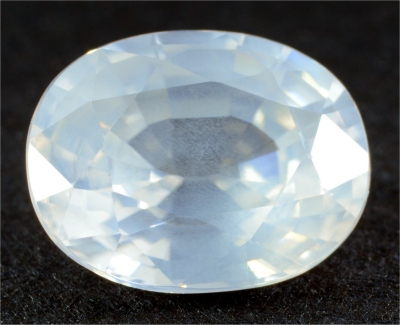 Figure 1. The 4.53 ct hazy-white zircon is colored by numberous
Figure 1. The 4.53 ct hazy-white zircon is colored by numberouswhite inclusions.
| Shape | oval, crown: brilliant cut, pavillion: step-cut |
| Size | 10.4 x 8.0 x 5.3 mm |
| Color | hazy-white, a kind of milky white color but not a blurry one |
| Lustre | sub-adamantine |
| Weight | 4.53 ct |
| SG | 4.77 |
| RI | ~1.97 mesured by reflectivity |
| DR | doubling of facets' edges observed with the 10x lens |
| Pleochroism | none |
| Polariscope / Conoscope | anisotropic: light/dark 4 times / 360° but shows some anomalous extinctions in some directions |
| SWUV | faint whitish-blue (figure 3a) |
| LWUV | very faint whitish-yellow (figure 3b) |
| Magnetic susceptibility N52 | diamagnetic |
| Chelsea filter | colorless |
| Radioactivity | below the ambient natural level (<0.1μSv.h-1) |
Table 1. Observational and measured properties
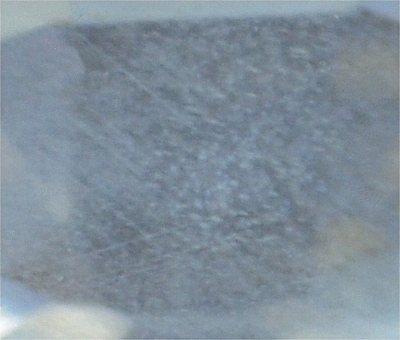 Figure 2a. The high density of the white inclusions gives the hazy-
Figure 2a. The high density of the white inclusions gives the hazy-white color to this zircon. FOV = 2.4 mm.
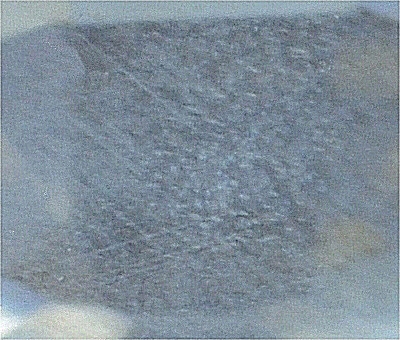 Figure 2b. This photography is the same as the one in figure 2a but
Figure 2b. This photography is the same as the one in figure 2a butit was enhanced (sharpened) by sofware. FOV = 2.4 mm.
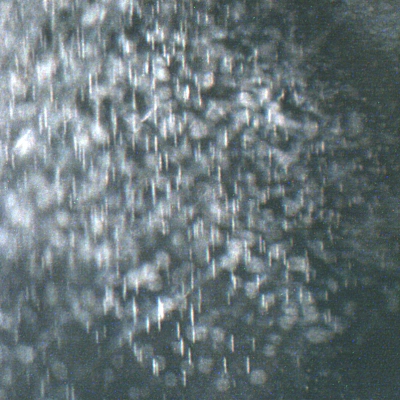 Figure 2c. The high density of the white inclusions gives the
Figure 2c. The high density of the white inclusions gives thehazy-white color to this zircon. FOV = 1.0 mm.
This zircon's sample is quite unusal by its inclusions which give the hazy-white or icy color to the gemstone (figure 2a). The haziness is accentuated by the doubling caused by the doubly refractive material. The photography (figure 2a) was enhanced by software by sharpening to reduce the haziness (figure 2b).
All inclusions are white and vary in size from very tiny to tiny. Most of them seem to be oriented in some planes that makes them appear like a thin, flat and elongated inclusions in one direction or large and elongated or even circular in another direction (figure 2c). Where they are less concentrated and bigger than elsewhere they look like small craks with a darker center. It has been difficult to describe others, even with a polarizing filter to get only one image, the material being doubly refractive. Some of these inclusions are also aligned to form some more or less dense lines.
Infrared reflectance spectroscopy:
The infrared reflectance spectrum (figure 4) was collected from the gemstone's table. The spectrum pattern is characteristic of zircon and it still shows a good crystal structure state. The spectrum does not show any effect of metamictization that would have result in a rounded shape of the 800-1200 cm-1 region, the bands are still well defined. This zircon can be classified as a 'high-zircon'.
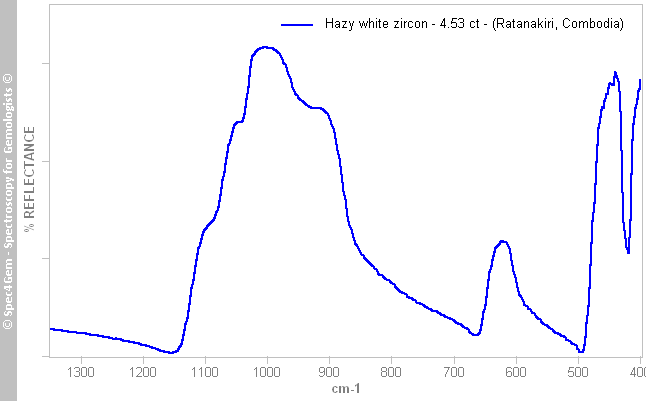 Figure 4 The IR reflectance spectrum charaterizes the gemstone as zircon, especially a high-zircon (non-metamict or non-partially metamict) zircon.
Figure 4 The IR reflectance spectrum charaterizes the gemstone as zircon, especially a high-zircon (non-metamict or non-partially metamict) zircon. UV-VIS-NIR spectroscopy:
Zircon is optically anisotropic and although there is no observed pleochroism, the intrinsic 'color' being colorless, polarized spectra were collected. The two spectra, the violet and the red in figure 5, respectively for the E_|_C and the E || C polarizations, show significant features with sharp bands over the all visible's spectrum. The spectra are quite common for zircon with U4+ traces. The anisotropy is easily observed with the doublet at 653 nm and some other bands. Even if the spectra are the result of U4+ substituing Zr4+ in the crystal lattice, the radioactivity is below the detection limit (<0.1μSv.h-1). Some green zircon from Sri Lanka can reach much higher radioactivity levels. The absorbance or the coefficent of absorption are so low that the absorption towards UV does not impact the color of the gemstone as seen by human eye.
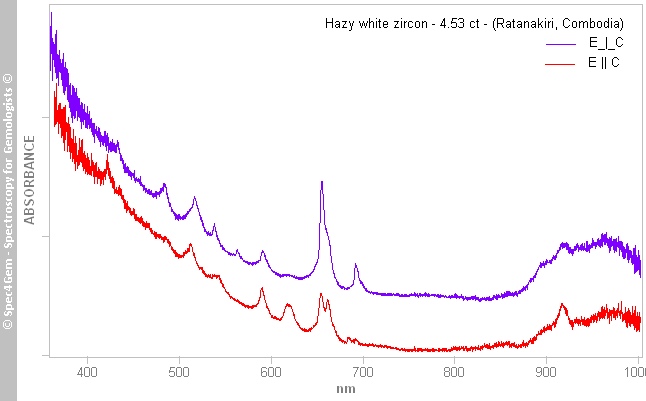 Figure 5. Polarized UV-Vis-NIR spectra of the 4.53 ct zircon recorded for E_|_C and E||C polarizations showing the characteristic U4+ spectrum pattern.
Figure 5. Polarized UV-Vis-NIR spectra of the 4.53 ct zircon recorded for E_|_C and E||C polarizations showing the characteristic U4+ spectrum pattern.Photoluminescence spectroscopy:
While exposed to the 405 nm laser, the gemstone exibits a pink color which is not the whitish-yellow luminescence color observed if exposed to LWUV. The 405 nm luminescence spectrum (figure 6) shows several distinct emissions consisting of groups located around 480 nm in the green, 570 nm in the yellow, 610 nm in the orange, 655 nm in the red and 710 nm in the deep-red. Such emissions are ascribed to REE3+ [3][4] and are quite common in zircon.
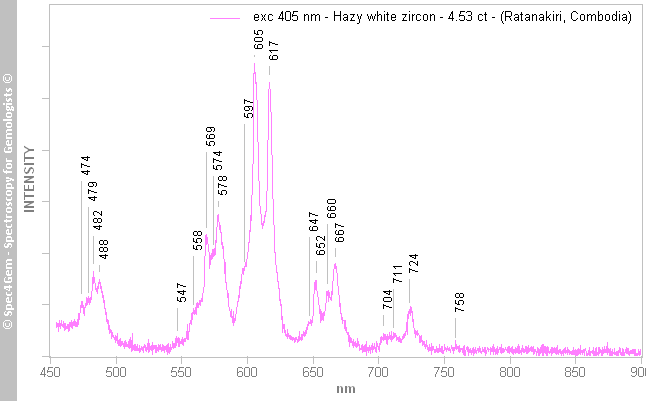 Figure 6. Photoluminescence spectrum of the 4.53 ct hazy-white zircon while excited by 405 nm laser. The numberous emissions organized by group produce an overall pink luminescence. These characteristic emissions are connected to REE3+.
Figure 6. Photoluminescence spectrum of the 4.53 ct hazy-white zircon while excited by 405 nm laser. The numberous emissions organized by group produce an overall pink luminescence. These characteristic emissions are connected to REE3+. Since this unusual zircon shows distinct luminescence under SWUV and LWUV lamps, it is interesting to collect the corresponding luminescence spectra. This is even more true because the luminescence colors differ from that of the luminescence produced by 405 nm laser. The spectra (figure 7) collected for the two excitation sources at 254 and 377 nm show some similarities with the 405 nm spectrum, especially for the emission groups around 480 and 570 nm (see figure 6). The luminescence spectrum with the excitation source at 377 nm only shows the two previously cited emission groups, with a possible third group around 460 nm. These emissions result in the yellowish (whitish-yellow) luminescence color. In contrast the luminescence spectrum with the excitation source at 254 nm is richer, besides the 480 and 570 nm groups, all emission groups observed with the 405 nm excitation source are observed. The corresponding spectrum also present a very large (broadband) emission ranging from 400 to 700 nm with a maximum around 460 nm. This emission pattern is responsible for the whitish-blue luminescence color of the gemstone observed under SWUV lamps.
Whereas the emission groups can be explained by REE3+ emissions, the large emission over the all visible spectral range is unexplained at the moment and would require further investigation.
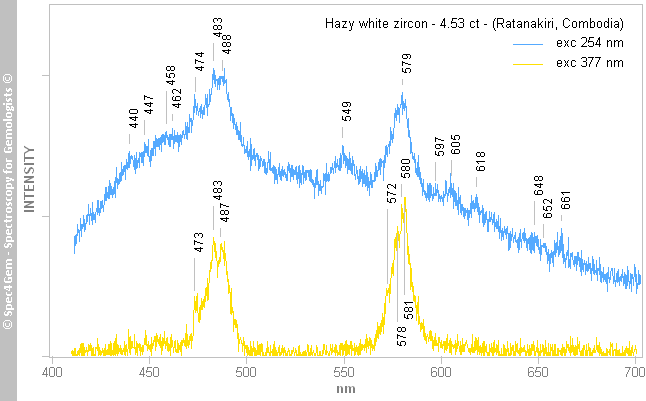 Figure 7. The 254 and 377 nm photoluminescence spectra of the 4.53 ct zircon show REE3+ emissions and a broadband emission with the maximum in the blue specific to 254 nm excitation, the later is unexplained at the moment. The luminescence colors observed under SW- and LW-UV lamps are consistent with the spectra. The 254 nm spectrum has been shifted for clarity.
Figure 7. The 254 and 377 nm photoluminescence spectra of the 4.53 ct zircon show REE3+ emissions and a broadband emission with the maximum in the blue specific to 254 nm excitation, the later is unexplained at the moment. The luminescence colors observed under SW- and LW-UV lamps are consistent with the spectra. The 254 nm spectrum has been shifted for clarity.Conclusion:
This Combodian zircon from Ratanakiri exhibits a singular color for a zircon, it looks almost white (not colorless), hazy-white or even icy-white. The color is caused by its microscopic inclusions such as in avanturine quartz or sunstone for instance but not by the selective absorption as in most of the gemstones. The intrinsic color of this zircon is colorless but because of the very large number of tiny white inclusions, the overall color is white and the phenomenom is accentuated by the double refraction.
Dr M. S. Krzemnicki and M. P. Steinbach published in 2015 an article about a 'Zircon showing asterism' [2]. The asterism is produced by oriented micro-fissures or micro-structures but nothing else than zircon in a zircon that had possibly been heated as suggested by the sharpness of the raman vibrationnal bands. This asteriated zircon was acquired in Ratnapura, Sri Lanka in the early 2000s. Even if our hazy-white zircon cannot be compared to the asteriated one, the question about heating is still open.
This zircon has incorporared some traces of U4+ as shown by UV-Vis spectroscopy and some REE3+ traces as shown by photoluminescence spectroscopy. The whitish-blue luminescence under the SWUV is not explained at the moment and needs further investigation.
[1] Zircon mining in Cambodia, M. H. Smith, W. A. Balmer, Gems & Gemology, 2009, Summer, pp. 152-154
[2] Zircon Showing Asterism, Dr M. S. Krzemnicki, M. P. Steinbach, Journal of Gemmology, 2015, volume 34, No.8, pp. 671-673
[3] Luminescent Spectra of Minerals, Boris S. Gorobets and Alexandre A. Rogojine, Moscow, 2002, ISBN: 5901837053
[4] Modern Luminescence Spectroscopy of Minerals and Materials, M. Gaft, R. Reisfeld, G. Panczer, 2015, Springer Editor, 2nd Edition, ISBN: 9783319247632
[5] Reversible color modification of blue zircon by long-wave ultraviolet radiation, N. D. Renfro, Gems & Gemology, 2016, Fall, pp. 246-251
[6] Blue Zircon from Ratanakiri, Cambodia, M. Zeug, L. Nasdala, B. Wanthanachaisaeng, W. A. Balmer, F. Corfu, M. Wildner, Journal of Gemmology, 2018, volume 36, No.2, pp. 112-132
[7] Zircon et geikielite artificiellement étoilés du Sri Lanka, J.-P. Gauthier, B. Rondeau, T. Pradat, Revue de Gemmologie A.F.G., June 2012, N°180, pp. 5-11


